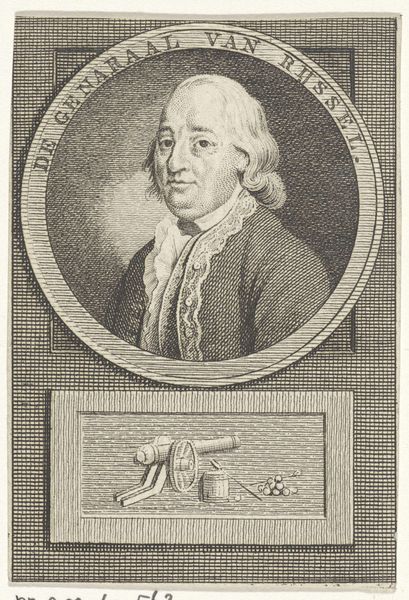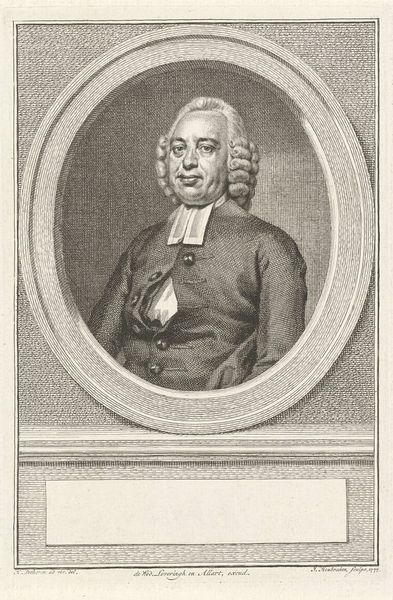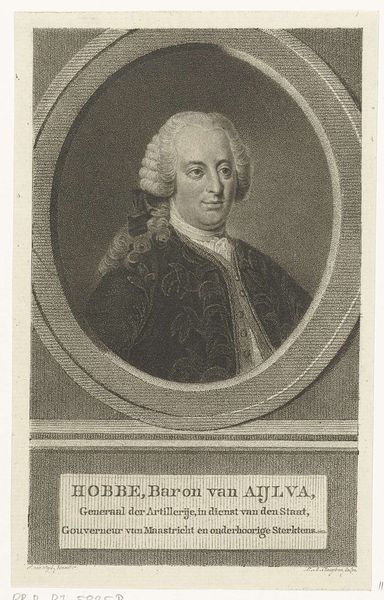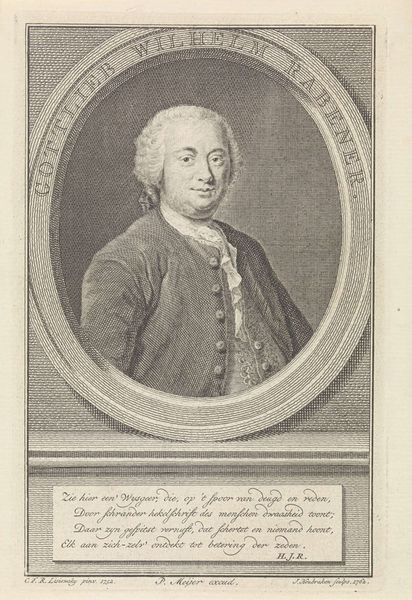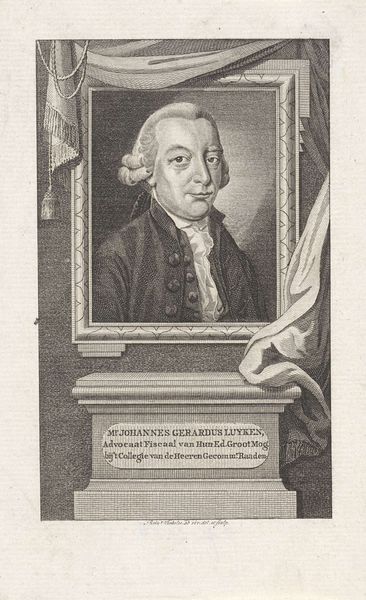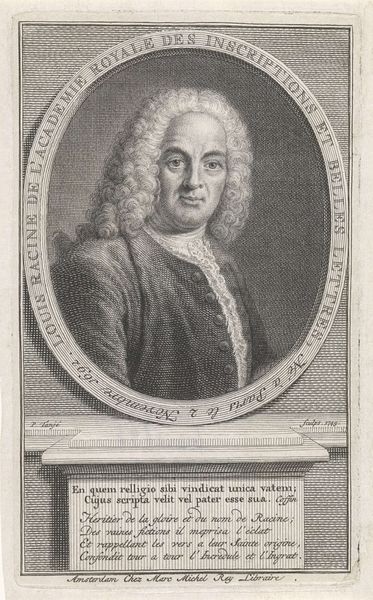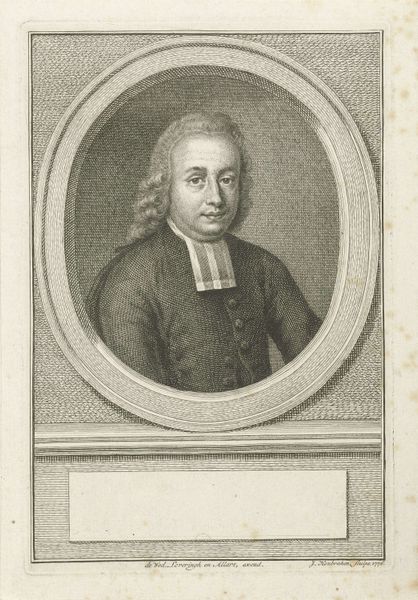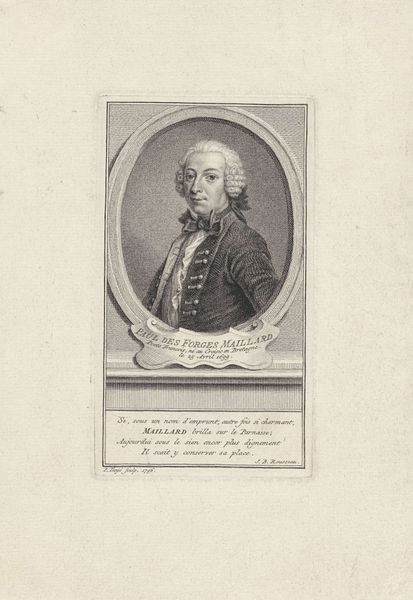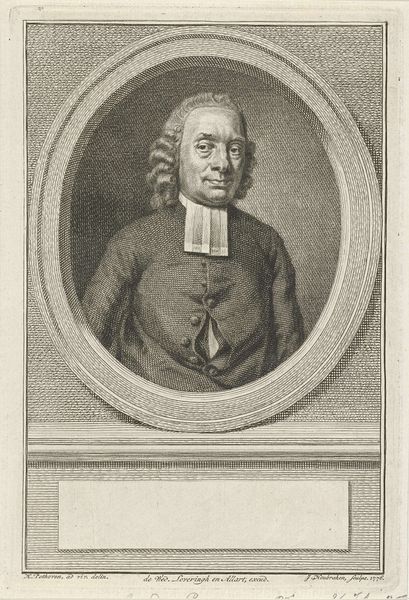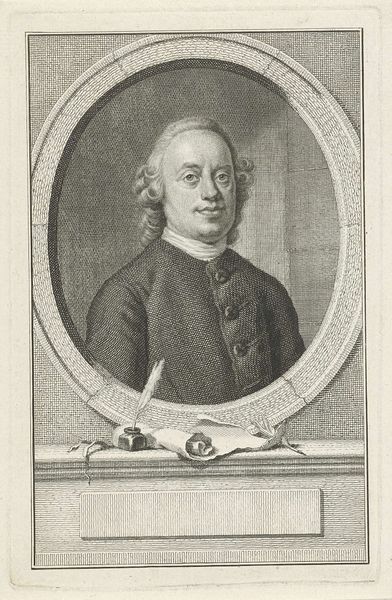
#
pencil drawn
#
aged paper
#
photo restoration
#
pencil sketch
#
old engraving style
#
personal sketchbook
#
portrait reference
#
old-timey
#
19th century
#
pencil work
Dimensions: height 224 mm, width 123 mm
Copyright: Rijks Museum: Open Domain
Curator: Looking at this detailed portrait of Johann Friedrich Wilhelm Jerusalem, dated 1781, it’s fascinating to consider the techniques employed to produce such a likeness. The delicate pencil work, the hatching, everything speaks of meticulous labour. Editor: It has a stern and stately air, wouldn't you agree? Framed as it is with that ornate, almost heraldic laurel, the figure radiates authority. I wonder what role he played in the political discourse of the time? Curator: Well, the medium itself suggests accessibility. Pencil, unlike oil, made portraiture more readily available, thus shifting patronage beyond just the aristocracy. This piece encourages reflection on the changing dynamics of art production and the widening circles of consumers during the period. Editor: Precisely! The print format suggests this wasn't a commission for private display but intended for broader circulation. Considering the Enlightenment context, and the man’s visible religious insignia, this imagery likely served to project ideas of faith and social standing, maybe even subtly promoting certain ideals in a visually literate society. How do you see its social reach, then? Curator: I see a delicate dance between handcrafted skill and emerging technologies, a movement towards mass production of images impacting artistic labour and valuation. A far cry from singular art objects displayed at royal houses! The labour required, even for a print, is very evident upon closer looking. Editor: It raises the intriguing notion that this artwork is less about Jerusalem the man, and more about the distribution of his image as a vehicle for a specific worldview in the public consciousness. Curator: Indeed. It is the labour of image creation that speaks to larger structures within 18th century society. Editor: Food for thought! It seems like, through the lens of both materials and political intention, we arrive at a deeper understanding of art’s social function in 1781. Curator: Precisely. Seeing this piece, I reflect upon the labor, circulation, and consumption shaping culture.
Comments
No comments
Be the first to comment and join the conversation on the ultimate creative platform.
